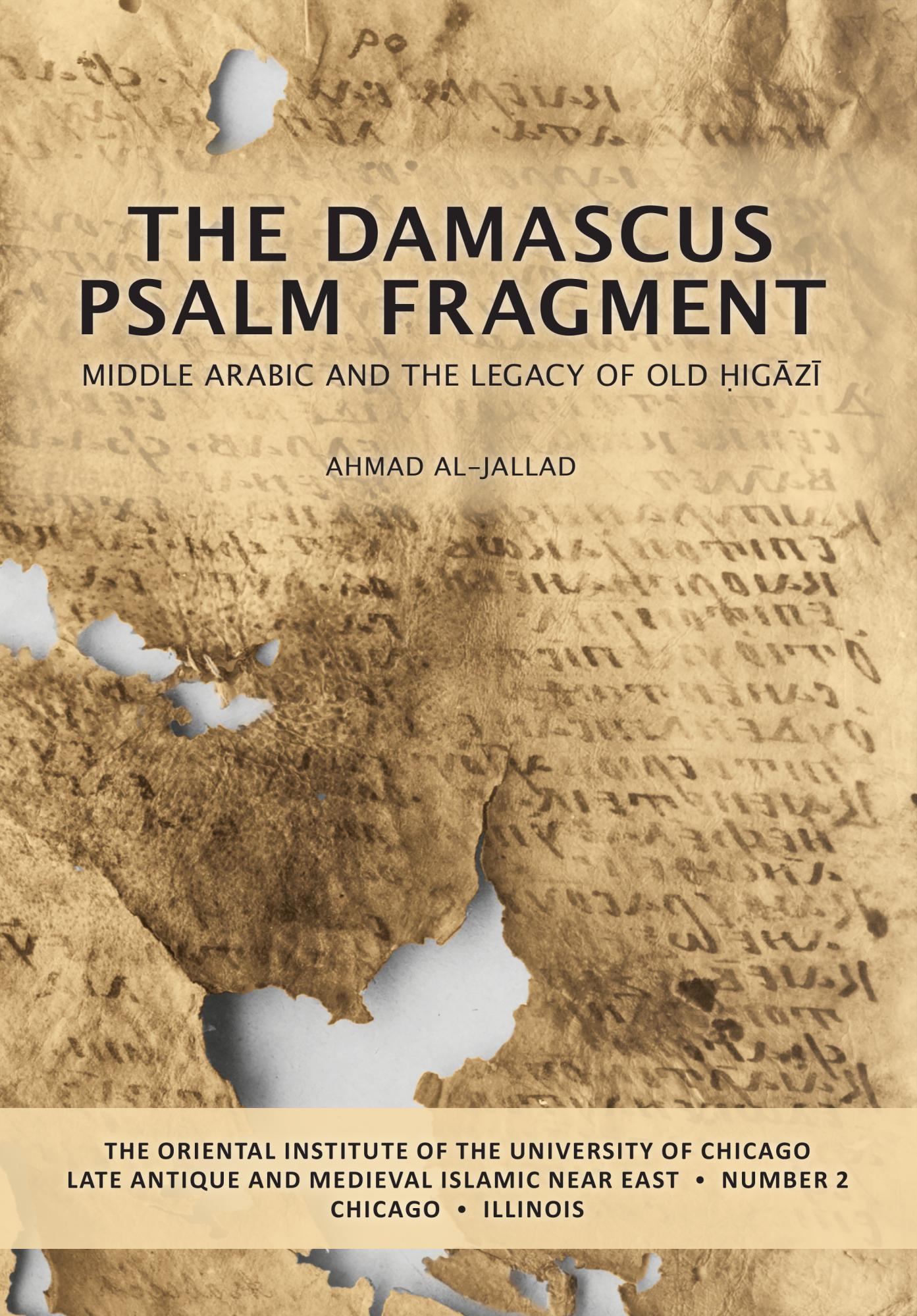By Ahmad Al-Jallad, with a contribution by Ronny Vollandt
Chicago: The Oriental Institute, 2020ISBN 978-1-61491-052-7160 pages (xxiv + 136); 31 figuresPaperback, 10 x 7 in.$39.95This book investigates Arabic’s transformative historical phase, the passage from the pre-Islamic to the Islamic period, through a new approach. It asks, What would Arabic’s early history look like if we wrote it based on the documentary evidence? The book frames this question through the linguistic investigation of the Damascus Psalm Fragment (PF), the longest Arabic text composed in Greek letters from the early Islamic period. It is argued that its language is a witness to the Arabic vernacular of the early Islamic period, and then moves to understand its relationship with Arabic of the pre-Islamic period, the Quranic Consonantal Text, and the first Islamic century papyri, arguing that all of this material belongs to a dialectal complexed we call “Old Ḥigāzī.” The book concludes by presenting a scenario for the emergence of standard Classical Arabic as the literary language of the late eighth century and beyond.Table of Contents
PrefaceAbbreviationsList of Tables and FiguresBibliographyContributions1. The History of Arabic through Its Texts2. The Psalm Fragment: Script, Phonology, and Morphology3. Dating and Localizing the Document, Writing System, and Language4. Old Arabic, Middle Arabic, and Old Ḥigāzī5. Edition of the Arabic Columns of the Damascus Psalm FragmentAppendix 1Beyond Arabic in Greek Letters: The Scribal and Translational Context of the Violet FragmentAppendix 2Pre-Islamic Graeco-Arabic TextsIndex

No comments:
Post a Comment